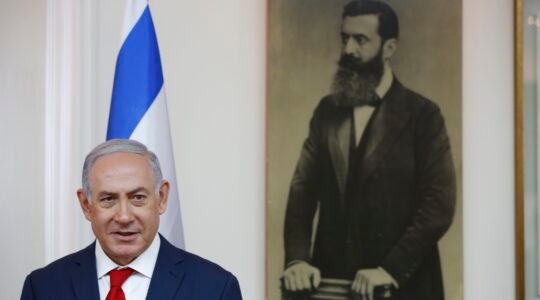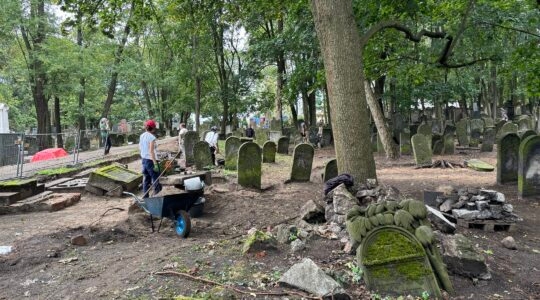(JTA) — Yad Vashem and the Israel Antiquities Authority believe they have identified the owner of a pendant found at the Sobibor Nazi death camp in Poland.
The pendant was dropped by its owner or someone in possession of the jewelry on the “Pathway to Heaven,” the path along which Jewish victims were forced to walk to the gas chambers. The pendant and personal items belonging to other inmates probably fell through the floorboards of the path and remained buried in the ground until they were discovered this past fall by Polish archaeologist Wojciech Mazurek and Yoram Haimi, an archaeologist from the Israel Antiquities Authority and their Dutch associate, archaeologist Ivar Schute.
Excavations at Sobibor have been ongoing since 2007, and are underwritten by the Steering Committee for the international project to establish a new museum and memorial site in the former German Nazi extermination camp in Sobibór, in coordination with Yad Vashem’s International Institute for Holocaust Research.
Among the personal items was a unique pendant, which bears the words “Mazal Tov” written in Hebrew on one side and on the other side the Hebrew letter for God’s name as well three Stars of David. The inscription on the pendant indicates that it probably belonged to a child from Frankfurt who was born on July 3, 1929. Researchers searched the Yad Vashem database and discovered a girl named Karoline Cohn who fits the description.
Cohn was deported from Frankfurt to Minsk on Nov. 11, 1941. While it is not known if Cohn survived the harsh conditions in the Minsk ghetto, her pendant reached Sobibor sometime between November 1941 and September 1943, when the ghetto was liquidated and the 2,000 Jewish prisoners interned there were deported to the death camp.
The pendant bears close resemblance to one owned by teenage Holocaust diarist Anne Frank. Additional research reveals that aside from similarities between the pendants, both Anne Frank and Karoline Cohn were born in Frankfurt, suggesting a possible familial connection between Frank and Cohn. Researchers are currently trying to locate relatives of the two families to further explore this avenue, Yad Vashem and the Israel Antiquities Authority said in a statement.
“The significance of the research and findings at Sobibór grows with every passing season of excavation. Every time we dig, we reveal another part of the camp, find more personal items, and expand our knowledge about the camp. In spite of attempts by the Nazis and their collaborators to erase traces of their crimes, as well as the effects of forestation and time, we enhance our understanding of the history previously known to us only through survivor testimonies. In this way, we ensure that the memory of the people killed there will never be forgotten. This pendant demonstrates once again the importance of archaeological research of former Nazi death camp sites. The moving story of Karoline Cohn is symbolic of the shared fate of the Jews murdered in the camp. It is important to tell the story, so that we never forget,” said Haimi.
JTA has documented Jewish history in real-time for over a century. Keep our journalism strong by joining us in supporting independent, award-winning reporting.





